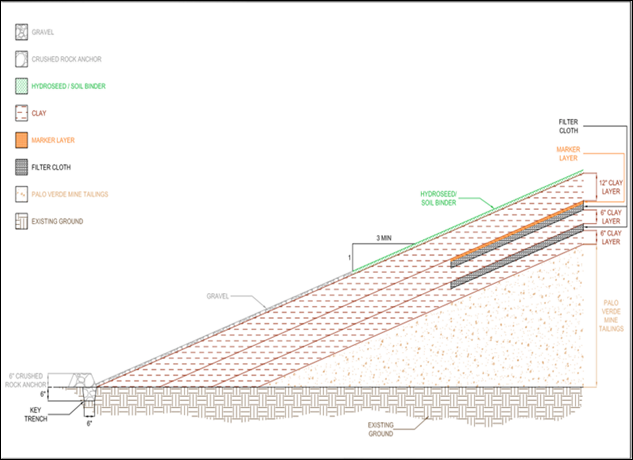Project Background
The Saginaw Hill Mine is a 290-acre area maintained by the Bureau of Land Management. The project site is located roughly 10 miles southwest of Tucson, AZ. The exact location of the site can be seen here. The Saginaw Hill mine was operated from the late 1800’s to the mid 1950’s. The mine produced base metal sulfides, which were used to process valuable metal ores brought in from other locations. The metal sulfides produced at the mine include copper, lead, gold, silver, zinc, and molybdenum.
Currently, most of the 540-acre Saginaw Hill area is open to the public except for the contaminated areas located around the mine. Under the supervision of the BLM, the Saginaw Hill Mine underwent a remediation project in 2009 by Red J Environmental Corporation. The BLM hired Red J to prevent continued contamination from the mine tailings and to monitor the contaminated groundwater surrounding the mine. Red J’s scope of work was to consolidate the waste tailings of the mine and sequester them from the surrounding environment. A layered clay and filter cloth repository cap was constructed over the tailings to prevent the tailings from migrating, which can be seen below:

Currently, the Saginaw Hill Mine is being inspected quarterly by Terracon Consultants. Terracon's quarterly reports show there are 13 metals in the groundwater surrounding the area. Terracon also inspects the arroyo riprap, gravel cap, repository cap, and diversion channels at the site. The arroyo riprap was deemed acceptable in a recent report, but it was noted that there was an area of bare geo-membrane filter fabric visible. The inspection also noted that the gravel caps were in good condition. However, the report noted that both the repository cap and diversion channels appeared to be damaged by erosion. There was sedimentation in the diversion channels and the repository cap’s vegetation layer was missing entirely.
Stakeholders
Residents in the surrounding area, the BLM, and state authorities who allocate funds for developmental activities are some of the important stakeholders in the process. They are the ones who are directly or indirectly affected by the consequences of the project. The BLM, the client for this project, is interested in contaihhoning hazardous substances at the site in order to uphold their mission of "sustaining the health, diversity, and productivity of America's public lands for the use and enjoyment of present and future generations." Residents in the surrounding area are stakeholders due to their concerns for personal health and property values. Government authorities have a stake in the project because they are the ones providing funding.